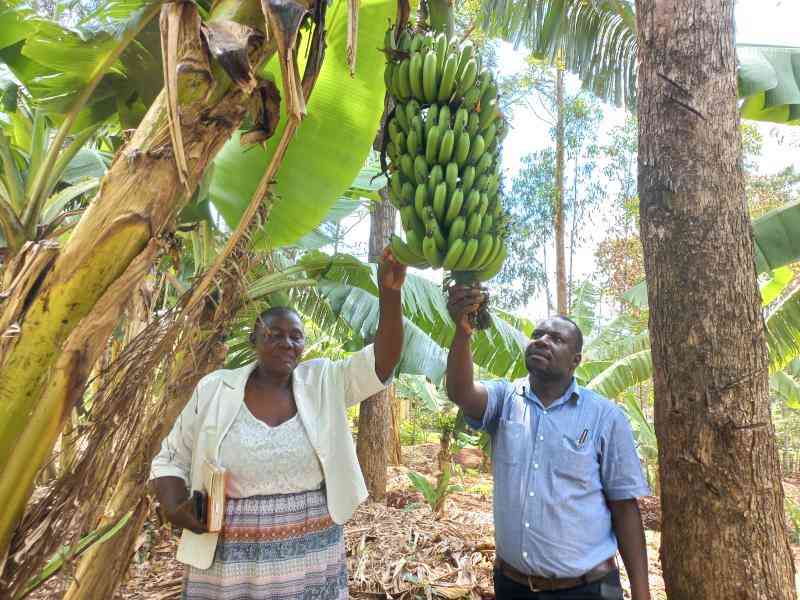VOI: In August 2007 Mikestone Kasyoki, now 23, joined his fellow classmates in Kang’undo AIC Primary School for an academic tour to Tsavo.
The day started well but Kasyoki noticed he was feeling thirsty more than usual and had to drink a lot of water followed by continuous need to visit the bathroom.
The symptoms continued to the next day by which he was taking a lot of water a day yet his lips were dry and his body weak. This was followed by loss of appetite and a desire to only consume sugary fluids. He eventually lost consciousness and was rushed to Kenyatta National Hospital for treatment where he was admitted at the ICU for four days.
“On the fifth day, I regained my consciousness but was exhausted and ended up sleeping the whole day. I stayed for another day at the ICU before I was transferred to another room. This is when I was told that I had diabetes type 1,” he says noting that he stayed at the hospital for a few more days as doctors advised him on dietary changes and how to manage the disease.
However, despite the diagnosis, Kasyoki had not accepted that he was diabetic and he did not follow doctor’s orders which had him in and out of hospital frequently. He came to accept his condition while in form four and begun to conduct his own research into the disease.
“Many people think diabetes is a disease for old people but the truth is, it affects anyone. It is, however, manageable. I now eat only traditional foods and avoid stressful situations,” he says.
According to Dr Kirtida Acharya, Chairperson of Diabetes Kenya and a Consultant physician/specialist defines diabetes as a state of chronic, hyperglycemia (high sugars) due to insulin deficiency and resistance.
“Diabetes is caused by multitude of factors including genetics and unhealthy lifestyle like diets comprising fried fatty starch foods, sedentary lifestyle or lack of exercise, cigarette smoking, excess alcohol, pancreatic diseases and pregnancy among others,” she says.
Dr Acharya says there are two types of diabetes: Type 1, previously known as juvenile or insulin dependent diabetes, which occurs among the younger age group and is not so common, accounting for ten per cent of sufferers. This type requires insulin injections for survival.
Type 2, previously known as adult onset or non-insulin dependent diabetes, which accounts for majority of sufferers, 80 to 95 per cent of patients. This type can initially be managed by medication and lifestyle changes though she says nearly 60 per cent of patients eventually end up on insulin. This type is preceded by the pre-diabetes state and is largely preventable by adopting a healthy lifestyle.
“There are two other types - one that is brought on by chronic pancreatitis and genetic syndromes while the other, gestational diabetes, afflicts a pregnant woman but goes into remission once the child is born. All pregnancies should therefore be screened in the second trimester for this condition,” she said.
Dr Acharya says while there are many symptoms that can point to a possibility that one has diabetes, the only way to know for sure is go for a test that looks at your blood glucose levels to see if they are above normal.
There is no known cure for diabetes so once the diagnosis has been made, Dr Acharya says a multi-disciplinary approach is needed to manage it.
“The patient will be given oral medication and may also need insulin injections. They may also require medication to manage their blood pressure, if they are hypertensive, and a cholesterol lowering agent to prevent complications such as heart attack and stroke. They also need to have annual ophthalmic and dental assessments, have their feet checked for complications and laboratory evaluations for kidney and other complications,” she says.
She says the patient is also taught to engage in regular monitoring of their blood sugars using a glucometer and documenting their status.
Stay informed. Subscribe to our newsletter
 The Standard Group Plc is a
multi-media organization with investments in media platforms spanning newspaper
print operations, television, radio broadcasting, digital and online services. The
Standard Group is recognized as a leading multi-media house in Kenya with a key
influence in matters of national and international interest.
The Standard Group Plc is a
multi-media organization with investments in media platforms spanning newspaper
print operations, television, radio broadcasting, digital and online services. The
Standard Group is recognized as a leading multi-media house in Kenya with a key
influence in matters of national and international interest.
 The Standard Group Plc is a
multi-media organization with investments in media platforms spanning newspaper
print operations, television, radio broadcasting, digital and online services. The
Standard Group is recognized as a leading multi-media house in Kenya with a key
influence in matters of national and international interest.
The Standard Group Plc is a
multi-media organization with investments in media platforms spanning newspaper
print operations, television, radio broadcasting, digital and online services. The
Standard Group is recognized as a leading multi-media house in Kenya with a key
influence in matters of national and international interest.








